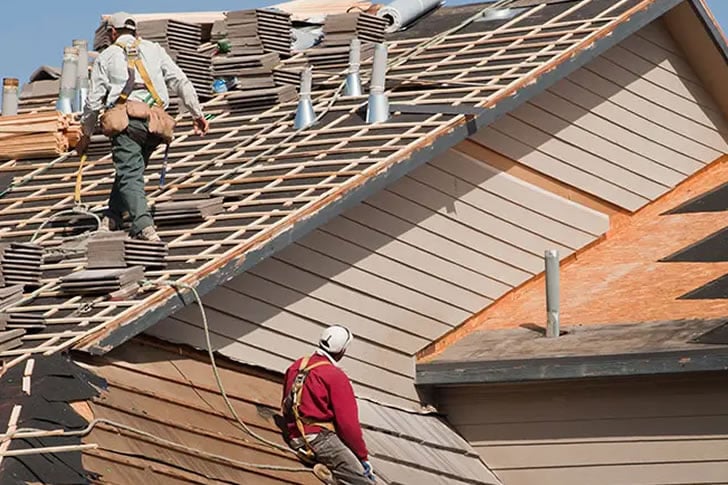Replacing your roof is a significant investment. This guide covers essential tips for selecting the top roof replacement materials to ensure durability, aesthetics, and cost-effectiveness for your home.

When it comes to roof replacement, selecting the right materials is essential for ensuring durability, efficiency, and aesthetics of your home. Roofs are your first line of defense against the elements, and the types of materials you choose can significantly impact the overall performance of the roof, its lifespan, and even your home’s energy efficiency. This comprehensive guide will explore various roof replacement materials, their features, benefits, costs, and best applications.
Asphalt shingles are one of the most popular roofing materials in North America, covering approximately 75% of homes. They are made of a fiberglass mat coated with asphalt and mineral granules for UV protection and color.
Residential homes in various environments, particularly where budget constraints are a consideration.
Metal roofs can be made from aluminum, steel, copper, or zinc and can be found in various styles, including panels, shingles, and tiles.
Homeowners looking for durability, energy efficiency, and modern aesthetics, especially in regions prone to extreme weather.
Tile roofs have been used for centuries, predominantly clay or concrete. They are known for their distinctive appearance and longevity.
Historic homes, Mediterranean-style architecture, and homes in dry climates where durability is critical.
Slate is a natural stone that has been used for roofing for centuries, providing an elegant and timeless appearance.
High-end residential properties and historic homes where aesthetics and longevity are critical.
Wood roofing is traditionally made from cedar, redwood, or pine and adds a natural and rustic look to buildings.
Cottages, cabins, or homes wanting to create a warm, rustic ambiance, especially in milder climates.
Synthetic roofing materials mimic traditional materials such as slate, wood, or shake but are made from materials like plastic, rubber, or polymer composites.
Homeowners looking for the aesthetics of traditional materials without the drawbacks, especially in areas prone to severe weather.
Ethylen Propylene Diene Monomer (EPDM) is a type of synthetic rubber roofing membrane widely used for flat and low-slope roofs.
Commercial buildings, garages, and homes with flat or low-slope roofs.
When choosing roof replacement materials, consider the following factors:
Selecting the right roofing material is crucial to ensure the longevity and performance of your roof. By understanding the pros and cons of each option and assessing them against your specific needs, you can make an informed decision that protects your investment for decades to come. Whether you prioritize cost, aesthetics, durability, or energy efficiency, this guide serves as a comprehensive resource in your roof replacement journey.
Explore the Tranquil Bliss of Idyllic Rural Retreats

Ultimate Countdown: The 20 Very Legendary Gaming Consoles Ever!

Affordable Full Mouth Dental Implants Near You

Discovering Springdale Estates

Embark on Effortless Adventures: Unveiling the Top in Adventures Made Easy Outdoor Equipment

Unlock the Full Potential of Your RAM 1500: Master the Art of Efficient Towing!

Dodge Ram: Redefining the Future of Full-Size Trucks with Unmatched Power and Innovation

Get New Phones Without Plans Easily

Smart Strategies to Slash Costs on Your Roof Replacement Endeavor
